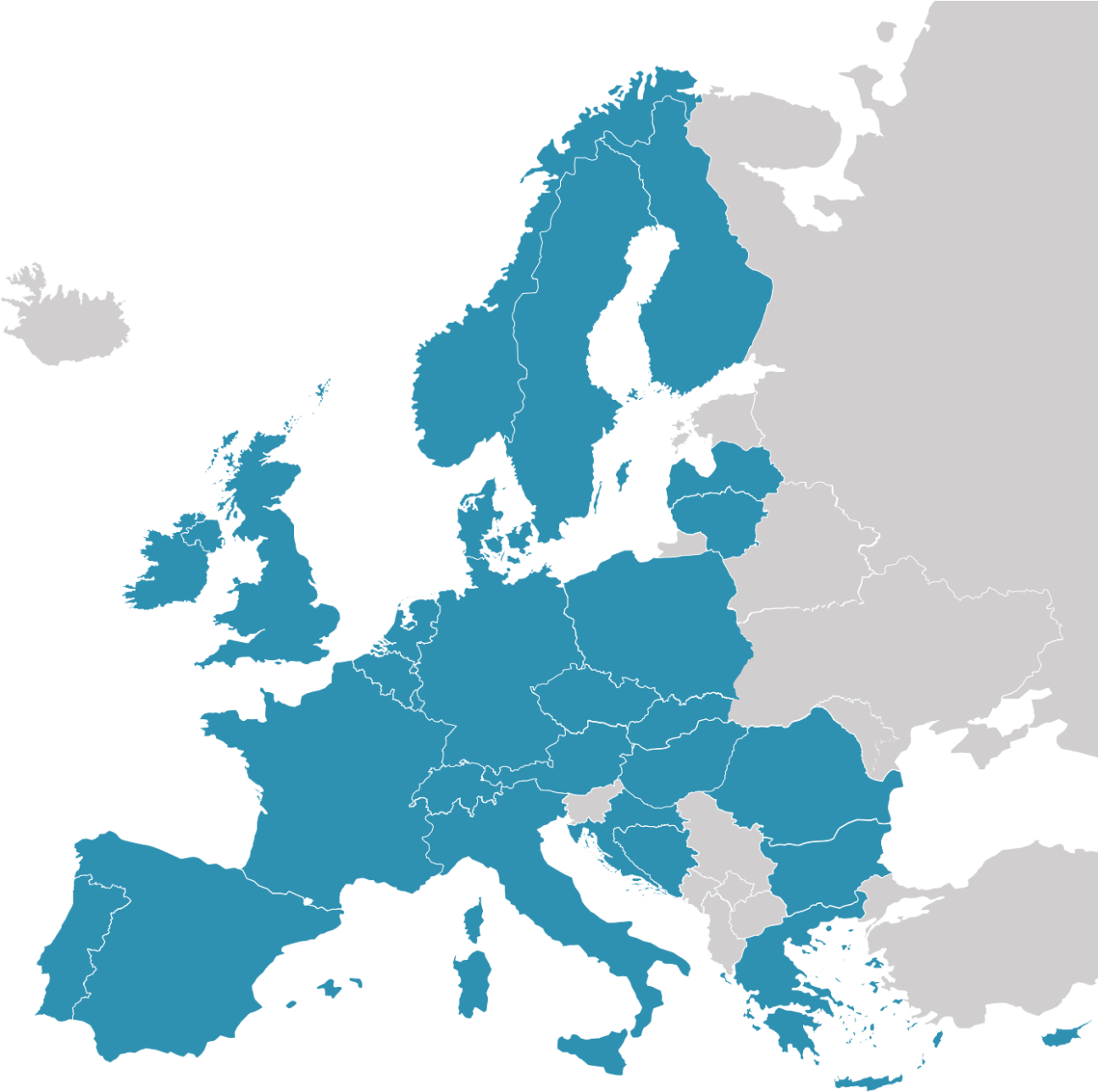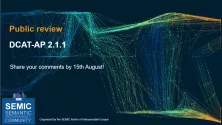The DCAT Application Profile for data portals in Europe (DCAT-AP) is a specification based on the Data Catalogue Vocabulary (DCAT) developed by W3C.
The basic use case for DCAT-AP is to enable cross-data portal search for data sets and make public sector data better searchable across borders and sectors. This can be achieved by the exchange of descriptions of datasets among data portals.
This application profile is a specification for metadata records to meet the specific application needs of data portals in Europe while providing semantic interoperability with other applications on the basis of reuse of established controlled vocabularies (e.g. EuroVoc) and mappings to existing metadata vocabularies (e.g. Dublin Core, SDMX, INSPIRE metadata, etc.).
Also, DCAT-AP provides a common specification for describing public sector datasets in Europe to enable the exchange of descriptions of datasets among data portals. DCAT-AP allows:
- Data catalogues to describe their dataset collections using a standardised description, while keeping their own system for documenting and storing them.
- Content aggregators, such as the European Data Portal, to aggregate such descriptions into a single point of access.
- Data consumers to more easily find datasets through a single point of access.
From the start, the DCAT Application Profile had the purpose of adapting DCAT to facilitate the reuse of data. In concrete:
- It proposes mandatory, recommended or optional classes and properties to be used for a particular application;
- It identifies requirements to control vocabularies for this particular application;
- It gathers other elements to be considered as priorities or requirements for an application such as a conformance statement.
SEMIC also maintains extensions for DCAT-AP such as GeoDCAT-AP for describing geospatial datasets, dataset series and services. Another extension, StatDCAT-AP, provides specifications and tools that enhance interoperability between descriptions of statistical data sets within the statistical domain and between statistical data and open data portals.
In December 2023 an annex of DCAT-AP, DCAT-AP for High-Value Datasets (HVD), was released. DCAT-AP for HVD offers users of DCAT-AP the possibility to adhere to the High-Value Datasets Implementing Regulation (HVD IR) with little additional effort.
1. What are the benefits of using DCAT-AP?
One of the main benefits of DCAT-AP is ensuring consistency by providing a standard for the description of metadata which is published by data portals across Europe. Also, DCAT-AP assists data re-users and data providers with the following activities:
- Data reusers can get an overview of which datasets exist and which public administrations are maintaining it, in particular if the datasets are in another Member State enabling multilingual access to information. For this, data publishers and portals maintain catalogues of datasets that are made available by public administrations on their websites. The quality of the description metadata in these catalogues directly affects how easily datasets can be found.
- Data providers encourage reuse of their datasets by making them searchable and accessible by listing it on one or more data portals which can significantly reduce costs.
2. Who developed the solution?
DCAT-AP is a joint initiative of:
- The DCAT-AP Working Group;
- the Directorate-General for Digital Services: DG DIGIT - in particular the SEMIC action of the Interoperable Europe programme;
- the Directorate-General for Communications Networks, Content & Technology: DG CONNECT; and
- the Publications Office of the EU.
3. How is DCAT-AP maintained?
DCAT-AP is maintained based on DCAT-AP’s own Change and Release Management Policy.
All changes in the specification are discussed with the DCAT-AP Working Group to make sure that changes do not negatively impact the operation of implementations and the interoperability across the network of data portals, and publicly communicated.
4. DCAT-AP key milestones

5. DCAT-AP for Data Spaces
The European Commission adopted a European strategy for data in 2020 in which Data Spaces play a key role. A Data Space is a way of organising and sharing data among different organisations or individuals who have a common interest or goal. It provides a secure and privacy-preserving infrastructure to access, process and use data, as well as clear and trustworthy data governance mechanisms.
Unless Data Spaces are interoperable, they remain data silos, which makes the exchange of data between Data Spaces incredibly difficult. Even within these silos there could be different layers of data that are not compatible or poorly accessible.
At SEMIC, we are committed to achieving findability and accessibility of data within, across and beyond Data Spaces. By promoting data interoperability, we aim to prevent the emergence of silos that hinder effective data sharing and reuse. DCAT-AP can be used in that aspect, breaking down the silos and improving the reuse and findability of data across Data Spaces by enabling metadata about data to be modelled in a uniform way.
6. Get started

| Download DCAT-AP latest and previous releases. |

| Discover the technical documentation of DCAT-AP. |

| Get acquainted with the Change and Release Management Policy for DCAT-AP. |

| Check metadata files for integrity and consistency against the DCAT-AP specification with the DCAT-AP Validator, which is hosted on the Interoperability Test Bed. |

| Read the paper on DCAT-AP Towards an open government data ecosystem in Europe using common standards. |
7. DCAT-AP users
The list below includes successful, known DCAT-AP implementations, but is not exhaustive.
8. Get involved!
Do you want to participate in the work of our DCAT-AP Working Group? Share your comments and change requests via the GitHub DCAT-AP repository.
9. Any questions?
Contact the SEMIC team.
10. About SEMIC
Visit the SEMIC collection on Joinup.
Pagination



